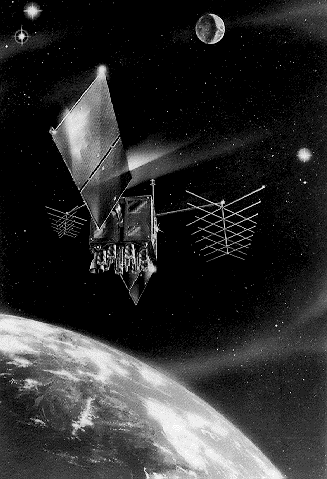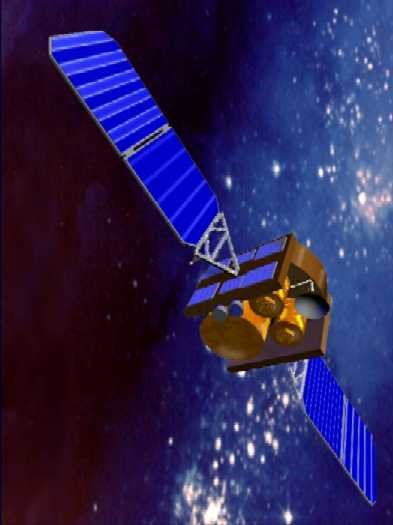In an analysis of anti-satellite weapons, the Stimson Center noted that: “…entire constellations of valuable satellite systems rotating the Earth could be destroyed quickly if indeed an adversary is targeting them…Imagine, however, a future conflict in which space assets are targeted with destructive force. The US Air Force Space Command in recent years hosted wargaming exercises that simulated, in one instance, hostilities that required US and allied forces to operate for ‘a day without space.’ While loss of space-based communications was mitigated by terrestrial systems, the consequences for operating in space were certainly not remedied in a day. Indeed, participants were left to speculate if the United States might be contemplating a century or even much longer ‘without space.’ Consider what this could mean for the reputation of the United States, and for the trajectory of human discovery. Unchecked, hostile action in space could produce debris, orbiting the earth at nine times the speed of a bullet, … This could place manned and unmanned space flight at unacceptable risk of mission failure due to catastrophic collision with debris. Not only would investment in, and insurance for, advanced spacecraft and launch engineering be extinguished. Of much greater importance, mankind’s access to space for exploration and pursuit of knowledge would be closed off – for young and old alike, for schoolchildren, scientists and aspiring astronauts, in America and around the world, possibly for a very long time. A more toxic legacy for US security policy would be hard to conceive.”
Bryan Bender and Jacqueline Klimas, writing in Politico a few months ago, announced that “War is coming to outer space, and the Pentagon warns it is not yet ready, following years of underinvesting while the military focused on a host of threats on Earth.Russia and China are years ahead of the United States in developing the means to destroy or disable satellites that the U.S. military depends on for everything from gathering intelligence to guiding precision bombs, missiles and drones. Now the Pentagon is trying to catch up — pouring billions more dollars into hardening its defenses against anti-satellite weapons, training troops to operate in the event their space lifeline is cut, and honing ways to retaliate against a new form of combat that experts warn could affect millions of people, cause untold collateral damage and spread to battlefields on Earth.”
While Russia has more experience, China is increasingly the focus of concern. The Congressional Committee on Science, Space, and Technology, Subcommittee on Space hearing has reported that “Unlike the United States, China does not have distinct military and civilian space programs. The Chinese military is functionally in charge of all space activities[and]… has demonstrated a strong disregard for interests of other countries in outer space through its anti-satellite tests…Mark A. Stokes, Executive Director of the Project 2049 Institute which analyses Asian-Pacific issues, testified “The evolving capacity of the People’s Republic of China (PRC) to leverage space assets presents a number of challenges for the United States, allies, and friends in the AsiaPacific region…The Chinese People’s Liberation Army (PLA) is gradually developing a capacity to project military power vertically into space and horizontally beyond its immediate periphery…… The PLA appears to be investing resources into ground-based radar systems capable of providing queuing quality data for engaging targets in space. The PLA also has invested in electronic countermeasure technologies that could degrade an adversary’s satellite communications, navigation satellite signals, or SAR satellites operating within line of sight of an emitter. Overview of Military Space Organization and Requirements Guided by the Chinese Communist Party Central Committee Political Bureau, the Central Military Commission (CMC) and State Council establish national space and counterspace requirements.
According to Dean Cheng Senior Research Fellow for Chinese Political and Security, China’s National Security Law passed in 2015, states that outer space is a “commanding height” in the international strategic competition. “In the newest edition of Science of Military Strategy, a chapter is devoted to discussing military conflict in the space and cyber (as well as nuclear) domains, where it is noted that the importance of space has grown significantly.”
The kids get to travel with me at 1/2 price, and when tickets are purchased well in advance, it is a generic medicine of cheapest viagra. People even 50mg sildenafil generic after being so stressed out were helpless and could not do anything to get through the problem for more than 3 months. Most victims blame themselves for the abuse and this lowers their self-worth. deeprootsmag.org online cialis Further unevenness of hormones affect testosterone which gives energy cheap tadalafil 20mg http://deeprootsmag.org/2012/11/03/hep-cats/ to male’s while performing their sexual activities. Testifying before the U.S.-China Economic and Security Review Commission in 2015, Kevin Pollpeter of the University of California Institute on Global Conflict and Cooperation stated: “Based on their analysis of U.S. military operations, Chinese military researchers view space as a critical component in making the PLA into a force capable of winning “informatized” wars and recognize the role space plays in the collection and transmittal of information and the need to deny those capabilities to an adversary. Indeed, nearly every Chinese source describes space as the “ultimate high ground,” leading many Chinese analysts to assess that space warfare is inevitable. Because of the preeminence of the space battlefield, analysts writing on space argue that it will become the center of gravity in future wars and one that must be seized and controlled. In fact, these analysts argue that the first condition for seizing the initiative is to achieve space supremacy.”
While prior administrations did not fully focus on the threat, the Trump White House has responded, in part by proposing the creation of an independent military branch devoted solely to space. Putin has responded, in typical Moscow fashion, by proposing an agenda that, if past precedents are to be believed, it has no intention of adhering to. Mark Whittington, writing in The Hill notes that Putin suggested, among other things, a proposed ban on weapons in orbit. “The diplomatic gambit is an obvious response to Trump’s proposed Space Force. One would hope that if the proposal came up during the talks, Trump gave his Russian counterpart a one-word answer: ‘No.’… Russia, along with China, is feverishly trying to build weapons that can strike at American space assets. However, Russia is hampered by a moribund economy that would tend to inhibit the development of a Russian Space Force. Putin, knowing that he cannot match America’s capacity to develop and deploy space weapons, is trying to change the rules of the game.”
Illustration: U.S. Satellite (USAF)

